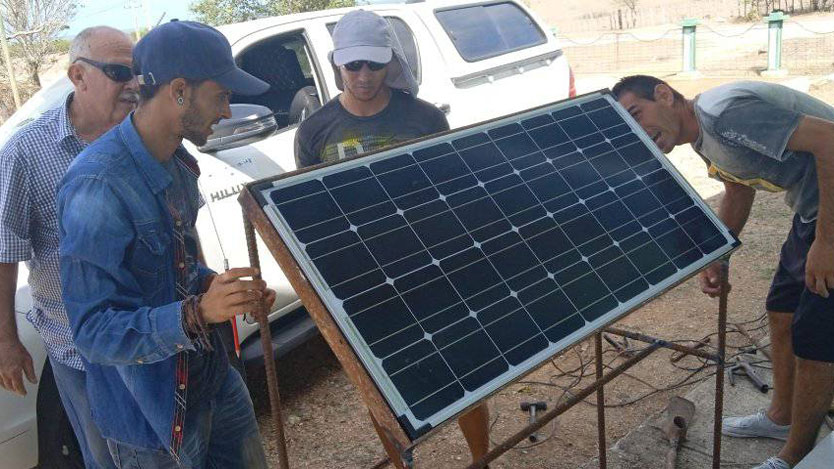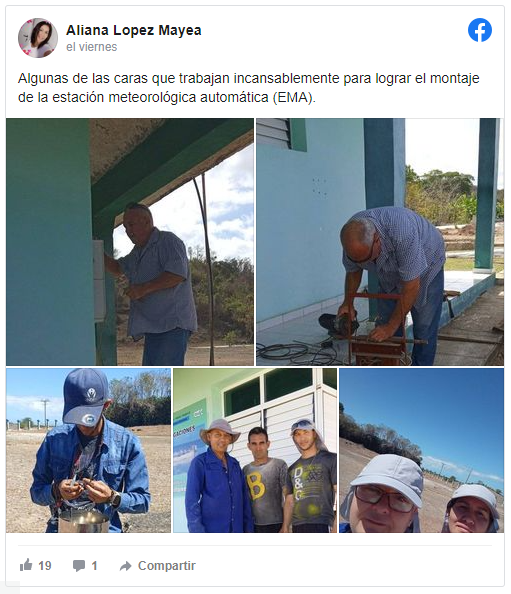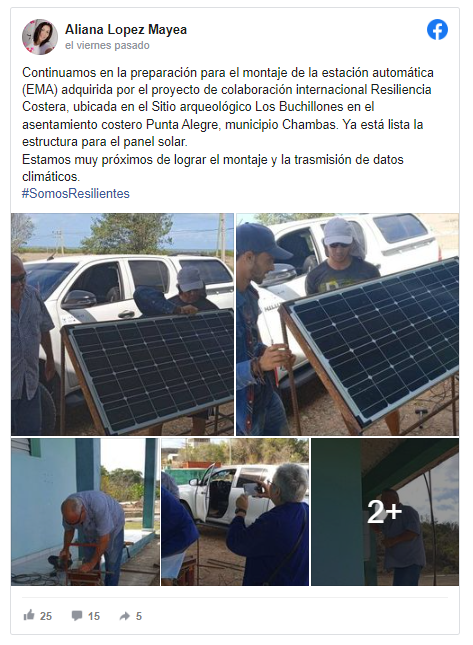
The assembly of an automatic meteorological station (EMA) in the coastal town of Punta Alegre, northwest of Ciego de Ávila, will strengthen the early warning system (SAT) in the north-central region of Cuba to face extreme hydro-meteorological phenomena and other effects of climate change (CC).
Aliana López Mayea, deputy technical director of the Provincial Meteorological Center (CMP), explained that the equipment —made up of a mast with sensors, a rain gauge and a solar panel (with its battery) for power supply— will transmit data uninterruptedly, with possibilities to obtain information every 10 minutes and monitor atmospheric variables in real time.
She explained that the EMA, acquired through the international Coastal Resilience project —with one of its four direct intervention sites in Punta Alegre—, will allow measuring the behavior of temperatures, rainfall, relative humidity, wind speed and direction, cloudiness, atmospheric pressure, solar radiation and other indicators.
She stressed that climate services will favor territorial development planning, fundamentally agriculture and fishing, and valued the effectiveness of this system for reducing disaster risks, by alerting to exceptional situations and effects caused by tropical cyclones, heavy rains, droughts and other phenomena that may occur as a consequence of climate change.

Referring to the location of the meteorological station, she specified that it responds to the interest of Coastal Resilience to strengthen and integrate disaster risk reduction and adaptation to climate change in the socioeconomic development plans of sectors and governments of vulnerable coastal municipalities.
She recalled that the project increases resilience in communities damaged by Hurricane Irma and threatened by climate change, so that they can face the rise in mean sea level and high-intensity hydro-meteorological events, in line with the forecasts for that portion of the northern coastline Cuba.
This automated system will be adjacent to Los Buchillones Archaeological Site Research Center, in an area that meets essential requirements such as security, leveling the terrain and distancing from natural or artificial elements that may distort the measurement of meteorological variables.

María del Carmen Olivera Isern, provincial coordinator of Coastal Resilience, emphasized that the meteorological station will complement the work of the Chambas' Disaster Risk Reduction Management Center, by providing information for climate studies and facilitating decision-making aimed at protecting human and material resources in the event of danger scenarios.
She recalled that a multidisciplinary and multi-sectoral team works in this institution that ensures the activation of early warning systems, essential for prevention, confrontation and local development planning.
According to information from the CMP, the territory of Ciego de Ávila has four other meteorological stations in Júcaro, Venezuela, Camilo Cienfuegos and Cayo Coco; the first three are automated climatic and work simultaneously with conventional instruments for measuring atmospheric variables.
Previously devoid of these equipments and, therefore, classified as a zone of silence, the central-northern region of Cuba currently has an automated weather station in Playa Vitoria, in the municipality of Yaguajay, in the Spirit of Spirit, and it is expected that next month March begins to provide services in Punta Alegre.

CMP specialists specified that in the section from Nuevitas (Camagüey) to Caibarién (Villa Clara) —coinciding with the intervention area of the Coastal Resilience project— there were none of these climate-monitoring centers; that of Cayo Coco is not representative, due to its offshore location.
Yohanis de la Torre Galiano, technical director of the project, said that they also ensured the assembly and start-up of two automated tide stations, in Cayo Coco and Playa Vitoria.
She argued that they make it possible to permanently record data on the rise in mean sea level, with real-time transmission and expansion of information coverage to characterize and forecast other events and processes of various origins (extreme meteorological phenomena, oscillations of the astronomical tide and tsunami occurrence).
The improvement of the infrastructure and technology of early warning systems, both hydro-meteorological and mean sea level rise, is considered among the priorities of the project, financed by the European Union, through the Global Alliance for Change Climate plus, with four million euros.
